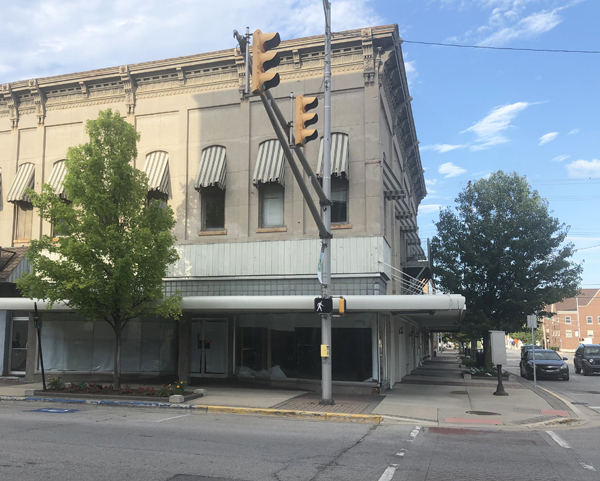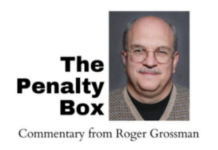
Warsaw Board of Zoning Appeals unanimously approved Monday for a second tattoo parlor to move downtown, but didn’t have the votes to approve expanding a parking lot for a church property.
In 2019, Nathan Prieshoff successfully petitioned to have his Moving Pictures Tattoo Cinema open up in a Commercial-4 zoned district at 112 E. Center St., despite some opposition to a tattoo parlor being downtown.
On Monday, Jose A. Rodriguez’s petition for a use variance to allow a tattoo parlor in a Commercial-4 district at 123 S. Buffalo St. went before the BZA. Rodriguez did not attend Monday’s meeting, but neither did any opposition.
The Board did receive a letter by email from Common Councilwoman Cindy Dobbins, who also owns property downtown, opposed to the petition. In part, she stated, “Current zoning regulations prohibit tattoo parlors in the C-4 district. Even in such districts where tattoo parlors are permitted … they are not allowed within 400 (feet) of a church, a daycare center or where there is residential usage within a commercially zoned district. The 100 block of South Buffalo Street currently has eight or more residential units. It doesn’t seem to make sense to create an exception in a district where tattoo parlors are not allowed, when said exception would not even meet the criteria in the districts where they are allowed.”
On Rodriguez’s petition, Assistant City Planner Jacob Ihrie said the petitioner has been operating within the city for six years at 2124 E. Winona Ave. and is seeking to relocate to 123 S. Buffalo St., at the northeast corner of Buffalo and Market streets.
The hours of operation will be noon to 8 p.m. Tuesday through Thursday and noon to 10 p.m. Friday and Saturday. The tattoo parlor will be closed Sunday and Monday.
The business currently employs five people and expects to maintain that number of employees if the variance is approved. Ihrie said the tattoo parlor would occupy a storefront that has been vacant for about two years.
The C-4 central business district is intended to provide areas for the major retail commercial uses serving the community and the general market area of the city.
He said as tattooing becomes more socially acceptable, it becomes important to embrace these changing attitudes. Many cities of comparable size to Warsaw have loosened the restrictions or have allowed tattoo shops to locate in their downtown, such as Cambridge, Ohio, with a population of 10,360, and Palestine, Texas, with a population of 17,989.
“Tattoo shops are immune to the negative impacts that e-commerce has on retail businesses that traditionally have occupied these storefronts,” Ihrie said. “This, combined with the tattoo parlor’s established business history, would indicate that it could be a long-term fixture in downtown and prevent the recurrence of the property becoming vacant.”
Research has shown that vacant properties have been associated with higher crime rates, reduced property values, elevated risks of fire and negative public health effects.
“During a time when we are experiencing a nationwide increase in storefront vacancies, attracting and promoting sustainable businesses in downtown is important enough to consider a variance such as this. For these reasons, it is the opinion of the Planning Department that this variance could be ruled favorably,” Ihrie concluded.
BZA member Tammy Dalton asked if there was a reason the petitioner was not in attendance at Monday’s meeting, but no one knew of any. She made the motion to approve the use variance and her motion passed 4-0.
The other petition before the BZA Monday was from Kim Clark for a use variance to allow a parking lot in a Residential-2 zone.
In presenting the Planning Department’s analysis on the petition, Ihrie said Clark was requesting to use three lots as a parking lot. The lots cover about 0.356 acres and are at the corner of Park Avenue and Webber Street. A portion of these lots is already being used for parking. If approved, the parking lot will serve the church at 614 Old Father St. Churches are allowed as a special exemption for districts zoned R-2. Further, churches are subject to the minimum parking requirements. It should be expected that parking lots be near churches in residential districts, he said.
The lots, if a variance is granted, would also fall under the landscape buffer and screen requirements in the city’s municipal code.
Based on the information provided, it is the opinion of the planning department that this case should be viewed favorably due to the lack of potential for detrimental impacts on surrounding properties, Ihrie said later during the meeting.
Clark, a realtor, said she was working with the property owner, Betty Wallace, and “they are looking at the vacant lots to use as parking area with the church. … Betty Wallace owns all seven lots. So, to be sure that as the church would sell, that there would be a parking area provided, that is why they are asking for the variance.”
Clark said in the past, there were cars parking in the grass when the church ministry was large. “But they just want to do the right thing by the property since they are representing it to sell,” she said.
The first remonstrator, Frances Lane, of 617 Webber St., said in all the years they have lived there, there has never been enough people to go there to park on the grass. She was concerned about junk cars being parked on the property and Webber Street not being big enough for more traffic.
Brenda House, who owns two properties, was concerned about drainage and flooding onto her property.
Bennie Banghart, 618 Webber St., was concerned about an entrance and exit to the potentially expanded parking lot. She also said Webber Street is a one-lane road and traffic was a concern.
On selling the property, Clark later explained, “The owner’s goal is to sell all of it – the duplex, all seven lots and the church, together.”
Dalton made a motion to deny the case, and Jeff Johnson provided the second, but her motion failed because while Dalton and Johnson voted for it, BZA member Dan Smith opposed the motion and President Tom Allen abstained. No other motions were made so the petition failed.




